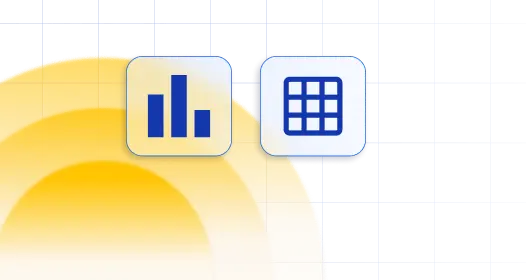


Table of Contents
HighCharts is an excellent charts library which allows exceptional rendering and animated charts.
wpDataTables integrates support for HighCharts and its cool charts so all users can render these types of charts out of their table data easily, and without a need for any coding.
The steps needed to create a chart and insert one on a WordPress post or page are explained in this documentation section. Here we will cover HighCharts types which are supported by wpDataTables plugin, and their features. You will also see HighCharts demo examples as a preview of what you can do with the HighChart API.
Each type has a demo provided.
The line chart is a basic chart where the series are rendered as “plain” lines:
The main difference between a HighCharts Basic Area Chart and a HighCharts Line Chart is that the areas below the lines are colored in a selected color:
This chart type is very similar to the simple area chart, the difference being that series values are “stacked” above each other:
In this chart type, the series data is rendered in horizontal bars:
This chart type is similar to a basic bar chart, but the series values are “stacked” to the right of each other in the horizontal bars.
This chart type renders the series in vertical columns:
This chart type is very similar to the basic column chart, but the series values are “stacked” on top of one another:
This is a “sliced pie” chart:
Same as the previous chart, but the “pie” is colored with a gradient:
This chart type is very similar to the pie chart, but the inner part is cut, so it’s more like a “donut”:
Basically, the same as the simple Pie chart, but rendered in 3D:
Same as the Donut chart, but rendered in 3D:
Same as column chart, but rendered in 3D:
According to Wikipedia, a Scatter plot “is a type of mathematical diagram using Cartesian coordinates to display values for two variables for a set of data”:
This chart type represents selected data in a Tree structure, where each node has size and color according to the given values.
The main difference between a Treemap chart and a Treemap level chart is that Treemap level chart has one more level, so you can show additional data. Here we showed car sales for 2016 and 2017. After you click on a car type, another level will appear that will give you additional info about sales in 2016 and 2017 separately.
From version 2.2 it is possible to create charts with multiple y axis in order to show different units on the same chart. This option is available for Line chart, Spline chart, Basic area chart, Basic bar chart and Basic column chart.
If you want to show the table with different units, create the chart with desired columns from a table, go to Series Setting of the chart and enable the option Show vertical axis. In this example, we chose two different units, but you can choose more, and for each one of them you will see this option. Also, you can change a chart type for those types that are mention above and also for Polar and Spiderweb Chart.
The Polar chart offers you the option to show the data in a two-dimensional chart where a series is represented by a closed curve with points in the polar coordinate system, and each data point is determined by the distance from the pole.
The Spyderweb chart is similar to a Polar chart just in a form of a spider web. Here as well series is represented by a closed curve with points in the coordinate system, and each data point is determined by the distance from the pole.
A funnel chart helps you visualize a linear process that has sequential, connected stages. For example, a sales funnel that tracks customers through stages: Lead > Sales Call > Follow-up > Conversion > Sale
The same as a funnel chart, but rendered in 3D:
To get your hands on wpDataTables Lite, please enter your email address below. We’ll send you a direct download link and keep you updated on existing features along with helpful tips and tricks!
